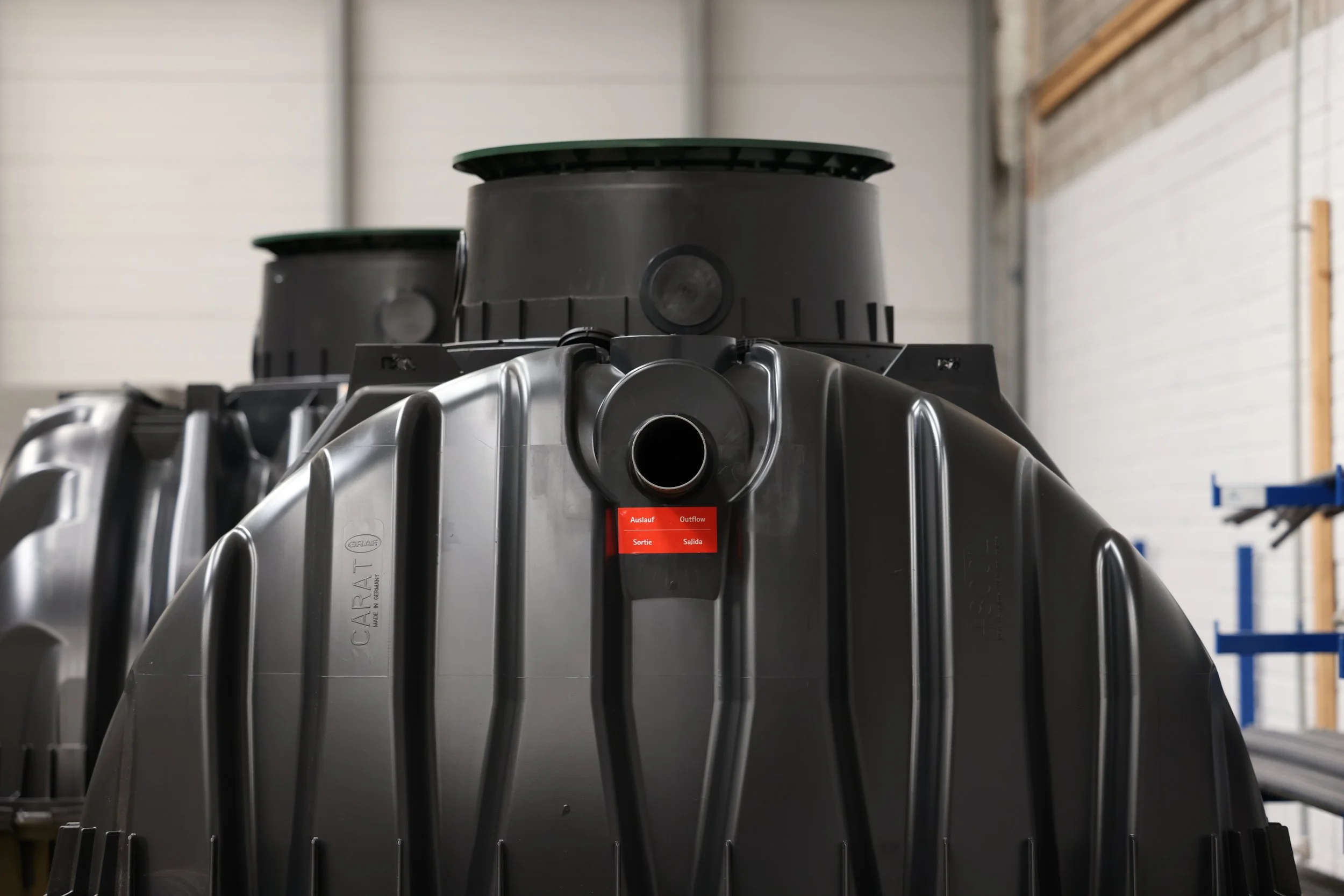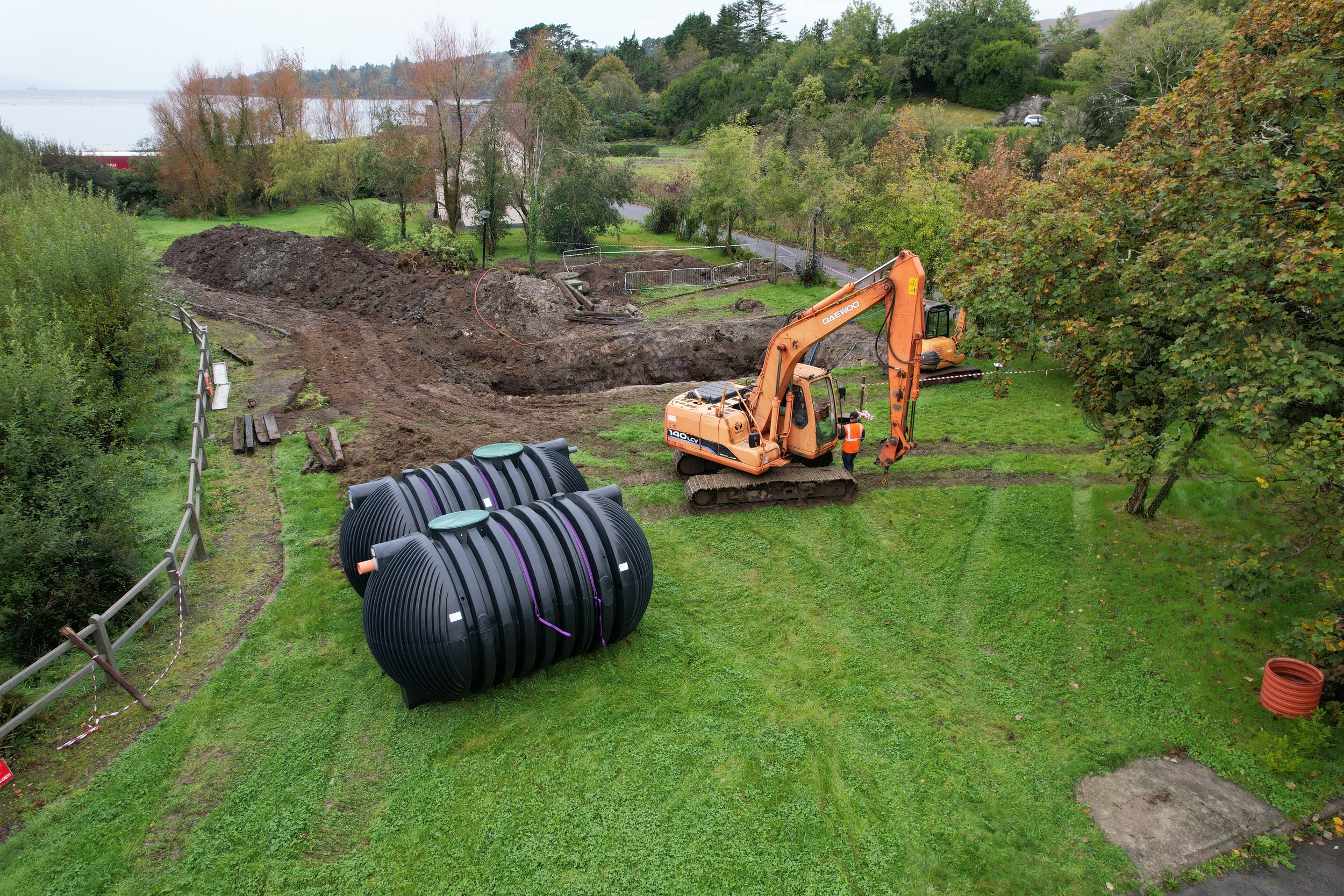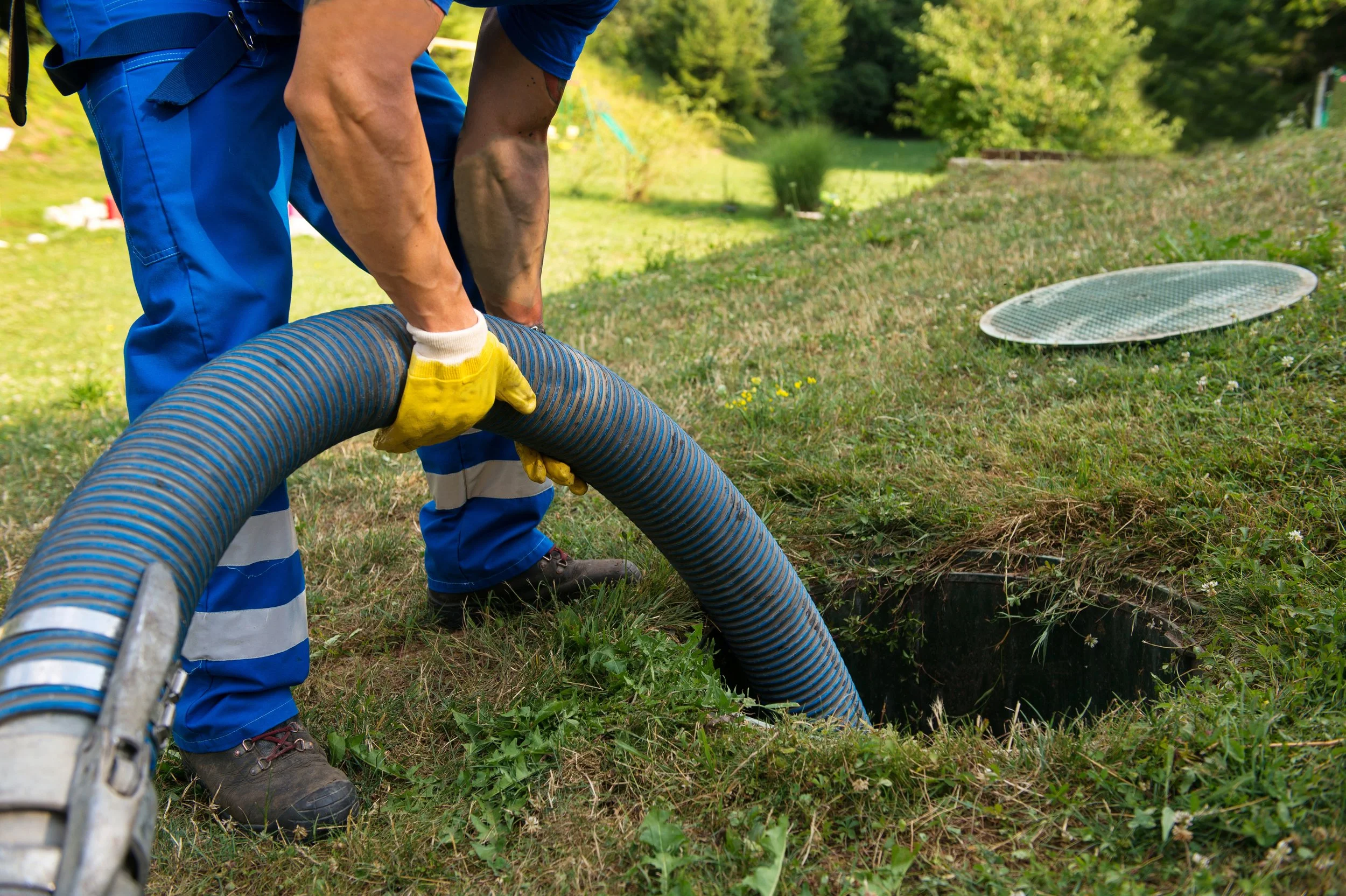
KLARO septic tanks are manufactured using 100% recycled material and use natural processes to treat your wastewater.
Features & Benefits
Lightweight & durable.
Manufactured using 100% recycled material.
Fully watertight to prevent additional rainwater loading.
Easy to install saving time & money.
Energy free.
Adjustable telescopic cover to suit ground level.
15-year structural warranty.
What is a septic tank?
A septic tank is an underground container that collects wastewater generated in your home or commercial facility. Using natural processes a septic tank removes suspended solids from the wastewater, this is considered “primary wastewater treatment”.
As there is limited anaerobic digestion (a process by which microorganisms break down organic matter in the absence of oxygen) the majority of the “secondary wastewater treatment” is carried out in a percolation area (a network of sub-surface perforated pipes in stone-filled trenches through which the final wastewater is distributed into the soil where it receives further treatment).
How does it work?
Wastewater (toilets, showers, baths, sinks, washing machines, dishwashers) from your home or commercial facility flows by gravity into the septic tank through an inlet pipe.
Heavy solids sink to the bottom of the tank while oils, fats, and greases create a scum layer on top, the remaining “effluent” is where the anaerobic digestion takes place.
The effluent leaves the tank through an outlet pipe and flows by gravity to your percolation area. An organic layer (biomat) forms between the base of the stone-filled trenches and subsoil which allows more time for the remaining pathogens to be removed before the treated effluent discharges to groundwater.
The remaining solids, oils, fats, and greases are removed periodically by a licensed de-sludging company that will safely dispose of the waste from your tank.
Why do I need one?
If you are building/renovating in a geographical area that does not typically have access to the main sewer you will need to install some sort of on-site wastewater treatment system to safely treat and dispose of your wastewater.
Untreated wastewater can contaminate local water supplies with harmful bacteria and viruses, it can also cause pollution of the environment through excessive phosphorus and nitrogen production.
How do I know if my site is suitable?
When you are building/renovating a new/existing home or commercial facility you will need to have an EPA Site Suitability Assessment carried out as part of your planning application. This will determine if you have suitable ground conditions and space available on-site to install a septic tank and percolation area.
For example, a 4 bedroom house requires a tank with a capacity for 6 people, you would need 6 trenches 18 metres long with 2.5 metre centres (each trench is 500mm in width) which would be a total area of 270m2 to safely treat and dispose of your wastewater.
You also need to meet the minimum separation distances from the water table or bedrock on-site as well as the property itself, surrounding boundaries, wells, other dwellings, public roads, etc. If you are not able to meet the separation distances you will need to install a packaged secondary wastewater treatment system which requires less space on-site and gives you more flexibility when it comes to ground conditions.
If a site is deemed unsuitable for discharging treated effluent to groundwater, alternative options, if any, will need to be discussed with the local authority.
Downloads
Featured Content
What our customers say

Contact us today
to arrange a site visit or place your order.








